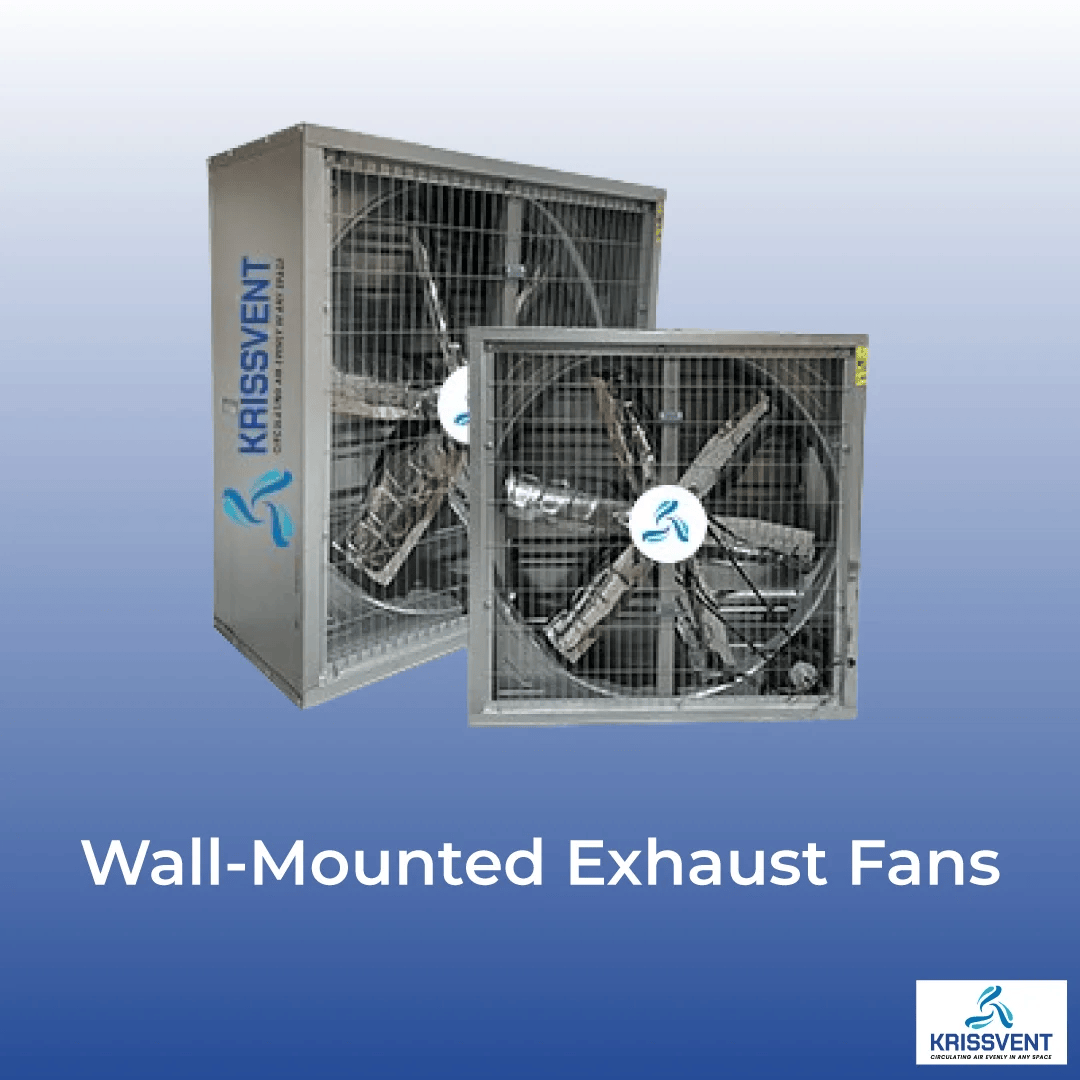
In today's industrial and manufacturing work environment, businesses are looking for every opportunity to enhance productivity, minimize downtime, and promote worker health. While automation and technological investments usually receive the priority attention, there's a pivotal and sometimes overlooked determinant that will either make or break employee performance: the quality of indoor air, specifically the efficiency of your facility's ventilation system.
Inadequate ventilation is not only a comfort problem—it directly and measurably affects worker health, mental acuity, and productivity. Fortunately, by implementing the correct infrastructure improvements, such as the installation of an industrial exhaust fan, companies can turn these ill effects around and create a more productive, healthier work environment.
The Hidden Cost of Poor Ventilation
If there is poor air movement in an environment, pollutants, dust, humidity, and toxic fumes condense. In industrial settings where processes such as welding, painting, metalwork, and chemical processing create airborne contaminants.
These are some of the main results of poor ventilation:
1. Fatigue and Cognitive Decline
Exposure to excessive CO₂, VOCs, and other pollutants can impair brain function. Mental clouding, decreased concentration, and reaction times are possible effects for workers. Even low-level CO₂ buildup has been shown to impair decision-making and problem-solving skills.
2. Increased Sick Days
Poor air quality is a haven for mold, viruses, and bacteria. Employees who are exposed to such irritants are likely to have respiratory infections, headaches, and allergic reactions—resulting in increased absenteeism and healthcare bills.
3. Heat Stress and Physical Discomfort
In factory environments, high temperatures and humidity can further increase if stagnant air is not disposed of effectively. This contributes to heat illnesses, particularly in areas where heavy machinery further generates excessive heat.
4. Reduced Morale and Engagement
When workers are physically uncomfortable or perpetually ill, it impacts their morale. A poorly ventilated environment sends a message of neglect, resulting in lowered motivation and greater turnover.
The Science Behind Ventilation and Productivity
Many studies have verified the correlation between indoor air quality and job performance. In one study that was published in the journal Environmental Health Perspectives, workers in ventilated offices were found to be 61% higher on cognitive tests compared to those in poorly ventilated workplaces. The same holds true for industrial workplaces, where physical and mental effort is equally influenced by air quality.
Good ventilation not only eliminates contaminants—it provides a steady supply of fresh, oxygen-rich air. This balance enhances not only health results but also job satisfaction and productivity.
What You Can Do: Solutions for Better Ventilation
The best news is that enhancing workplace ventilation does not necessarily mean a costly overhaul. A mix of well-designed upgrades and regular maintenance can make a big difference.
1. Install an Industrial Exhaust Fan
Among the most effective methods of increasing ventilation in big rooms such as factories, warehouses, and workshops is through the use of an industrial exhaust fan. These large capacity fans are engineered to draw contaminated, stale air out of the structure and ventilate it with fresh, external air.
Advantages of applying industrial exhaust fans are:
- Speedy evacuation of fumes, dust, and moisture
- Increased air exchange rates in big or inadequately ventilated rooms
- Less risk of airborne disease and odors
- Greater compliance with OSHA and indoor air quality codes
When purchasing a fan, take into consideration room size, airflow needs (in CFM), and what kinds of contaminants your operation emits.
2. Conduct Regular HVAC Maintenance
Your heating, ventilation, and air conditioning (HVAC) system is key to managing indoor air quality. Filters need to be changed periodically, ducts be cleaned, and systems monitored to provide peak performance.
3. Utilize Natural Ventilation (When Possible)
In some environments, opening windows, roof vents, or louvers can give natural airflow an added boost. This is particularly effective in moderate climates and can be used to complement mechanical ventilation strategies.
4. Monitor Air Quality with Sensors
Installing monitors of air quality that monitor CO₂ levels, humidity, VOCs, and particulate matter can provide you with real-time information on the condition of your environment. This enables you to detect areas of concern and act in advance before trouble starts.
5. Educate and Empower Employees
Train employees to identify signs of poor indoor air quality—like headaches, parched throats, or stinging eyes—and alert them immediately. Having a feedback loop in place keeps facility managers one step ahead of issues and encourages a safety culture.
Conclusion
Investing in proper ventilation is not merely a matter of compliance with safety codes—it's about giving your workforce a boost. An adequately ventilated space, augmented with an efficient industrial exhaust fan and properly cared for, offers people an environment where they can work at their best, think clearly, and stay healthy.
In a competitive marketplace, even minor advantages can bring major results. Let stale air and inferior ventilation jeopardize your operational success. Make your facility's air quality your priority—and see your productivity soar with it.
